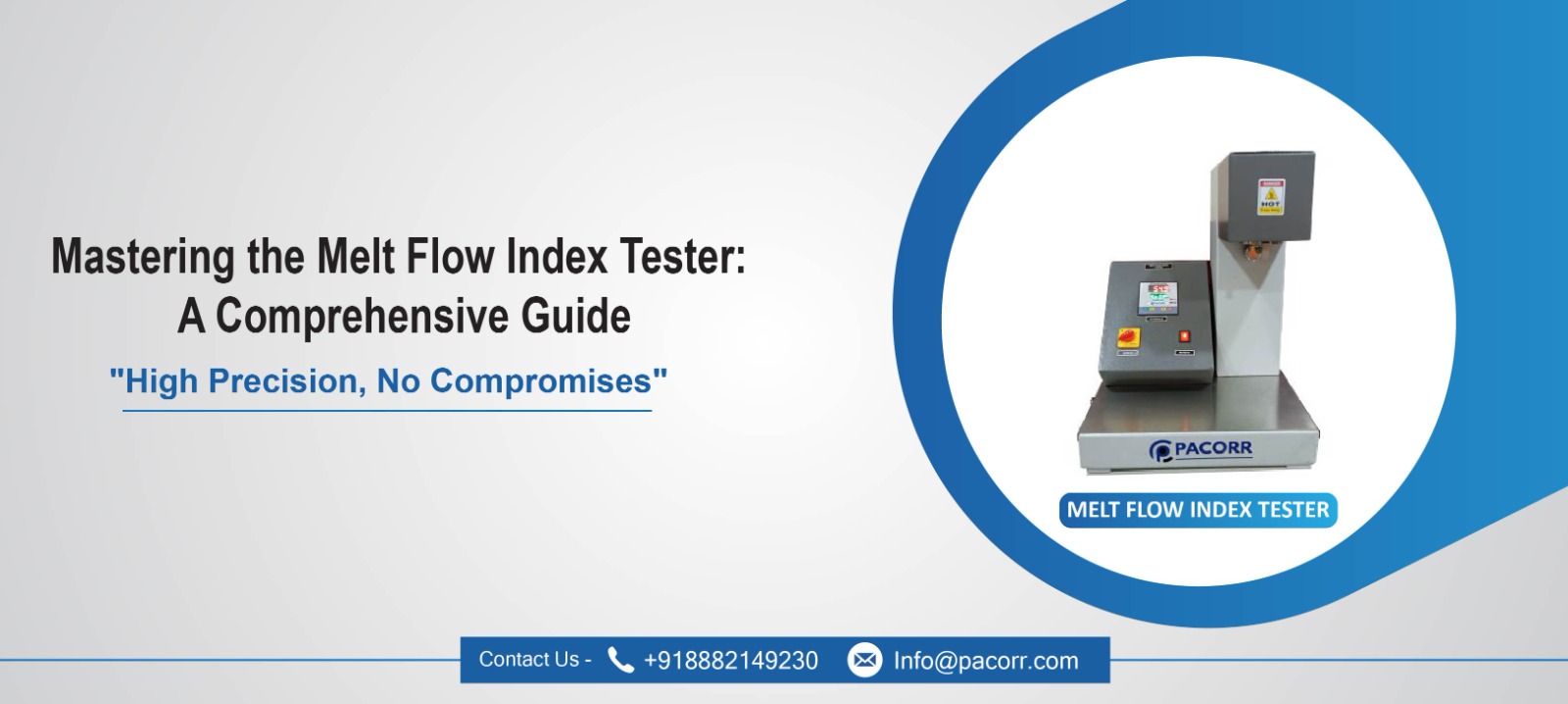
 Precision and consistency are key for plastic manufacturers. Whether you are a manufacturer, a quality control professional, or a researcher, understanding the behavior of thermoplastic materials is vital. This is where the Melt Flow Index (MFI) Tester comes into play, allowing you to evaluate the flow properties of polymers accurately. In this blog, we'll delve into the importance of MFI testing, its applications, and how to use this machine effectively, all based on today's search results.
Precision and consistency are key for plastic manufacturers. Whether you are a manufacturer, a quality control professional, or a researcher, understanding the behavior of thermoplastic materials is vital. This is where the Melt Flow Index (MFI) Tester comes into play, allowing you to evaluate the flow properties of polymers accurately. In this blog, we'll delve into the importance of MFI testing, its applications, and how to use this machine effectively, all based on today's search results.
Here's why MFI testing is so significant
1. Quality Control: MFI testing is crucial for quality control in plastic manufacturing. It ensures that the polymer materials meet specific industry standards and exhibit consistent properties.
2. Material Selection: Researchers and engineers use MFI data to select the right polymer for a particular application. Different applications require materials with varying melt flow characteristics.
3. Process Optimization: Understanding the MFI of a material helps in optimizing the manufacturing process. It allows for the adjustment of extrusion and injection molding parameters to achieve desired results.
Applications of MFI Testing
MFI testing finds applications in various industries. Here are a few sectors where MFI testing plays a crucial role:
1. Automotive: In the automotive industry, MFI testing is used to evaluate the flow properties of polymers used in interior and exterior components, such as bumpers, dashboards, and engine components.
2. Packaging: MFI testing is vital for packaging materials, as it determines the ease of processing and the ability to form various packaging products.
3. Medical Devices: Polymers used in medical devices must meet strict standards for biocompatibility and performance. MFI testing ensures these materials meet the necessary criteria.
4. Electronics: The electronics industry utilizes MFI testing for materials used in cases, connectors, and insulating components.
How to Use a Melt Flow Index Tester
Using a Melt Flow Index Tester may seem intimidating, but it can be broken down into a few simple steps:
- Sample Preparation: Begin by preparing a representative sample of the polymer material. This typically involves cutting the material into small pellets or granules.
- Heating the Material: Place the prepared sample into the MFI tester's barrel, which is equipped with a heating element. The sample is heated until it reaches a molten state.
- Extrusion: Once the material is molten, it is forced through a standardized orifice under a specified load. The extrusion rate is measured and used to calculate the MFI value.
- Recording Results: The MFI value is recorded and used for quality control or research purposes. It quantifies the material's flow properties.
- Cleaning and Maintenance: After testing, it's essential to clean the equipment thoroughly and perform any necessary maintenance to ensure accurate and consistent results.
Choosing the Right MFI Tester
When selecting an MFI tester, consider factors such as the type of materials you'll be testing, the required testing standards, and your budget. There are various models available, ranging from manual to fully automated testers, each with its own features and capabilities.
The Melt Flow Index Tester is an invaluable tool for anyone working with thermoplastic materials. Whether you're ensuring the quality of your plastic products, selecting the right materials for an application, or optimizing your manufacturing process, understanding MFI is essential. Today's search results can help you stay up-to-date with the latest advancements in MFI testing technology and methodologies, ensuring that you make the most of this critical testing process.
Thanks to Pacorr Testing instruments, we have all the required quality testing instruments that have helped us to ensure the best quality delivered to our clients.

Danish
Fair Exports Pvt. Ltd.

